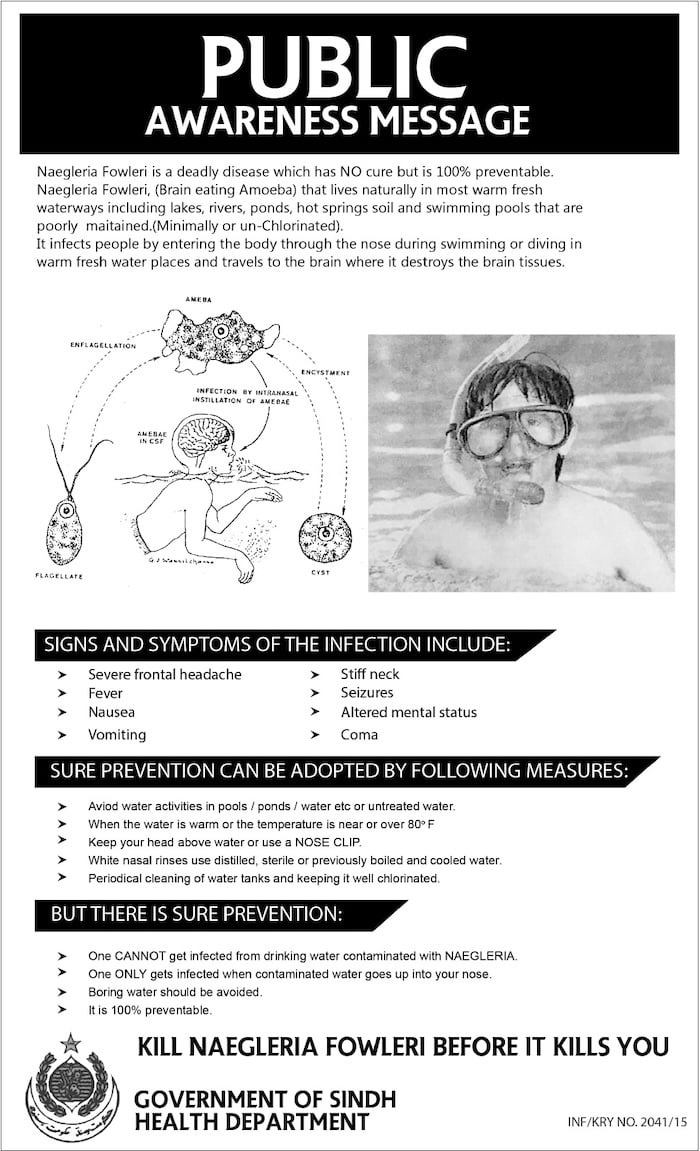Karachi reported its fourth Naegleria fowleri related death during 2021 this year on Monday (today).
As per details, Naegleria fowleri claimed another victim in Karachi during current year taking the total number of casualties to four.
The victim, 30-year-old Dr Majid Ismail Chandio, who was a neurosurgeon, passed away due to primary amoebic meningoencephalitis (PAM) at the PNS Shifa Hospital.
The deceased ad contracted a Naegleria fowleri infection on June 30 and was on ventilator for the past several days.
Meanwhile, an eight-year-old boy from Karachi’s District Central had from Naegleria at Liaquat National Hospital on Friday last week.
Separately, a 30-year-old resident of the Abul Hasan Ispahani Road area and a 40-year-old resident of the Quaidabad had succumbed to Naegleria in June and May respectively.
What Is Naegleria fowleri?
Naegleria fowleri, colloquially known as a “brain-eating amoeba”, is a species of the genus Naegleria, belonging to the phylum Percolozoa, which is technically not classified as true amoeba, but a shapeshifting amoeboflagellate excavate.
It is a free-living, bacteria-eating microorganism that can be pathogenic, causing an extremely rare sudden, severe and usually fatal brain infection called naegleriasis or primary amoebic meningoencephalitis (PAM).

This microorganism is typically found in bodies of warm freshwater, such as ponds, lakes, rivers, hot springs, warm water discharge from industrial or power plants, geothermal well water, poorly maintained or minimally chlorinated (under 0.5 mg/m3 residual) swimming pools, water heaters, soil, and pipes connected to tap water. It can be seen in either an amoeboid or temporary flagellate stage
Naegleria fowleri infects people when water containing the ameba enters the body through the nose. This typically occurs when people go swimming or diving in warm freshwater places, like lakes and rivers.
The Naegleria fowleri ameba then travels up the nose to the brain where it destroys the brain tissue.
You cannot be infected with Naegleria fowleri by drinking contaminated water.
The core antimicrobial treatment consists of the antifungal drug amphotericin B, which inhibits the pathogen by binding to its cell membrane sterols, thus leading to cell membrane disruption and pathogen death; however, even with this treatment, the fatality rate is greater than 95%.

















































